How to Save a Dying Rose Bush
Is your rose dying? I will show you how to save a dying rose bush plant. It is easy and so satisfying to save a rose from dying!
Do you have roses? If you do you may one day need to save a dying rose bush. It is good to know that reviving a dying rose or other plants is possible and not really difficult.
I love my roses and this year I have had issues with gophers. They have been chewing the roots off and even into the rose canes.
This has nearly killed a few of my roses. So that is how this article was born. I figured if I am having to revive roses that are dying then maybe some of you are too.
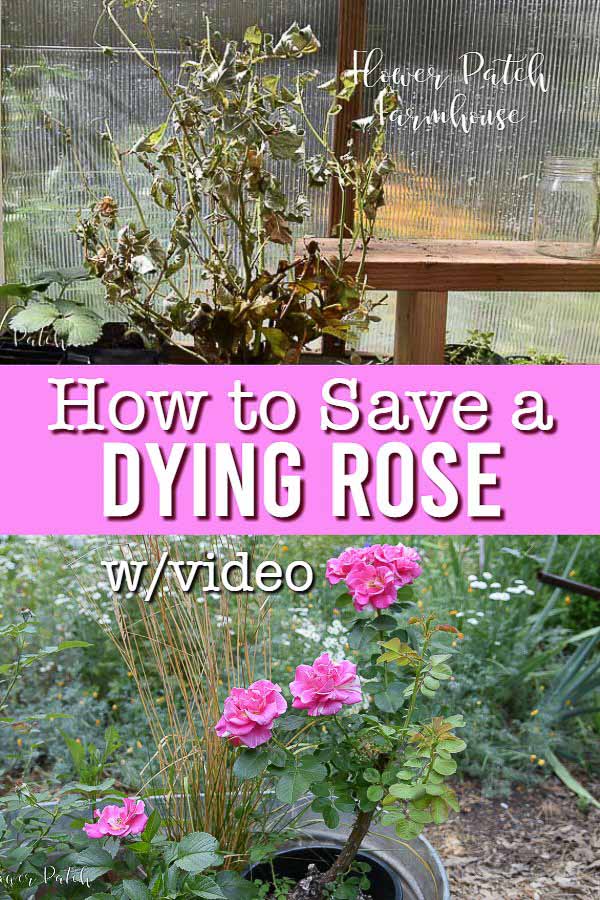
This post contains affiliate links, if you make a purchase after clicking a link I may make a small commission at no cost to you.
This is the photo of my nearly dead rose bush. It is withered and clearly dying. This is one of my Olivia Rose Austin roses. One day it was leafy, full of buds, and thriving. The next morning I find it like this!
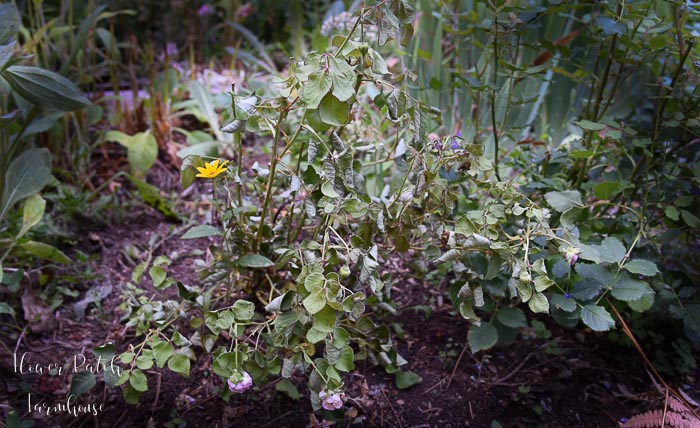
Earlier in the Spring, I had to dig up a rose and save it. At first, I wasn’t sure what had happened but in the video, I share that rose that I saved and the photos in this post are of this Olivia Rose.
I really do know how to grow roses, I don’t kill them usually. This is the first time I have dealt with this but I have had to move roses at the wrong time of year and this method works for that too.
This works for roses that may be declining for various reasons. If you can’t tell what is ailing it from looking at the rose then it is time for more dramatic measures.
easy tips and tricks
Roses are Easy to Grow!
Find out how easy it is the grow roses in your garden. All the tips and tricks for success.
How to Bring a Rose Plant Back to Life
Let’s get started with your tools. You will need a shovel, potting soil, a pot large enough for the rose (I used a 3 gallon size can), hand pruners and gloves.
Dig up the Rose Bush
The day before you are going to start digging up the rose make sure to water it deeply. This will make it better able to withstand the shock of transplanting but also make it easier to dig up.
Time to start digging.
Place your shovel far enough back you can preserve as many roots as possible.
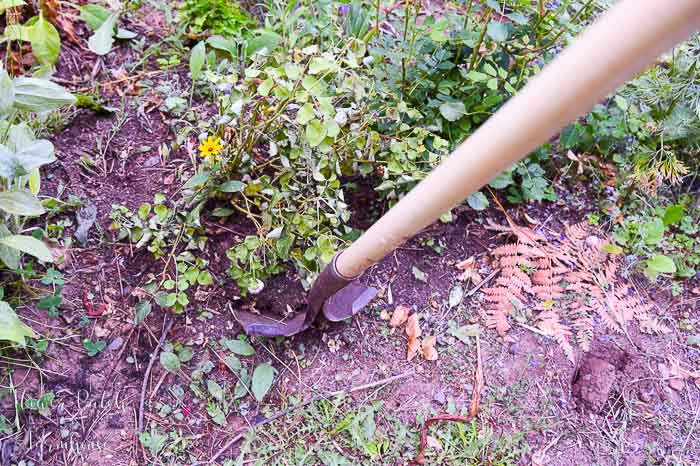
Dig all the way around the root ball then push the shovel down under it and pop the rose out of the ground.
As you can see here, mine had no roots left.
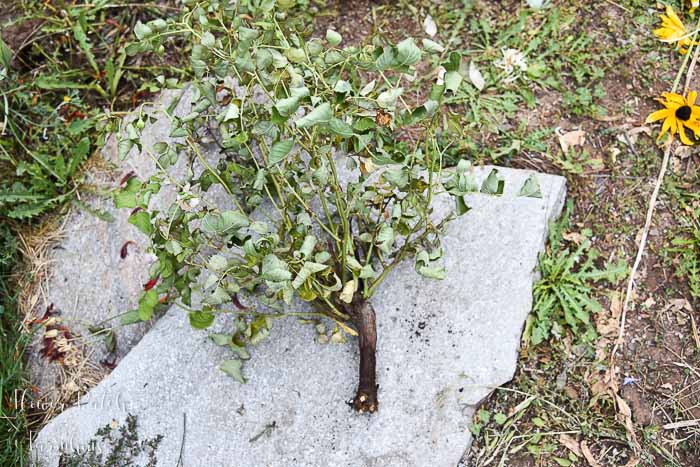
The voles or gophers have eaten them clean off. Your rose may not be struggling because of critters eating the roots off and you will have some roots.
In your case, you can trim up the roots a bit with your pruners to fit into your pot. Trimming the roots will not only make it easier to get them into a pot but will also stimulate new, healthy growth.
I am seriously worried that this rose will not recover. There are barely a couple of tiny hair-like roots left so my efforts to save this dying rose may be fruitless.
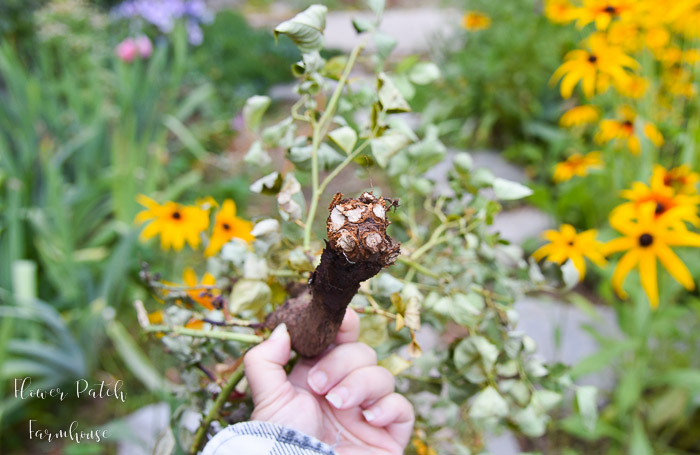
Prune and pot Rose
Fill a 5-gallon bucket or container large enough to place the rose in and let it soak while you prep the pot.
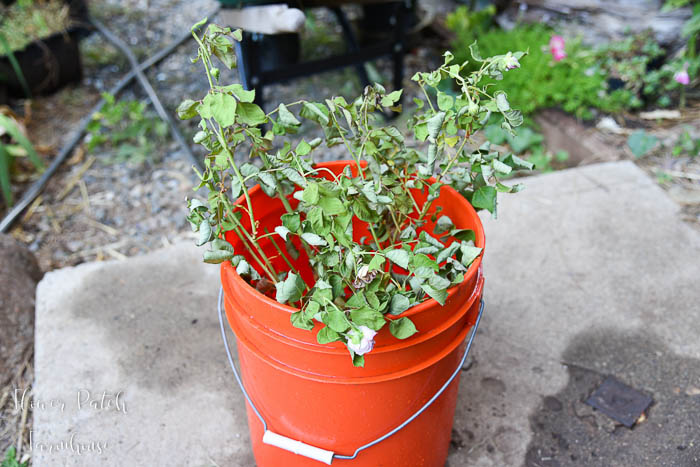
Trim off the rose canes down to 6 to 8 inches long. Remove all leaves as well.
Partially fill your pot or can with a good potting soil if you don’t have your own mix.
Optional: Add some Organic REV to the water to give it a boost in redeveloping roots or just as a growth stimulant.
Settle the rose roots (or nub in my case) into the soil. Finish filling the pot until it reaches the base where the canes grow out.
This is a grafted rose, not an own-root rose. I want to keep the graft visible to make sure I do not get any canes sprouting below the graft.
I won’t get into the specifics of grafted versus own root right now but typically I prefer own-root roses. One day I will write an entire post of why.
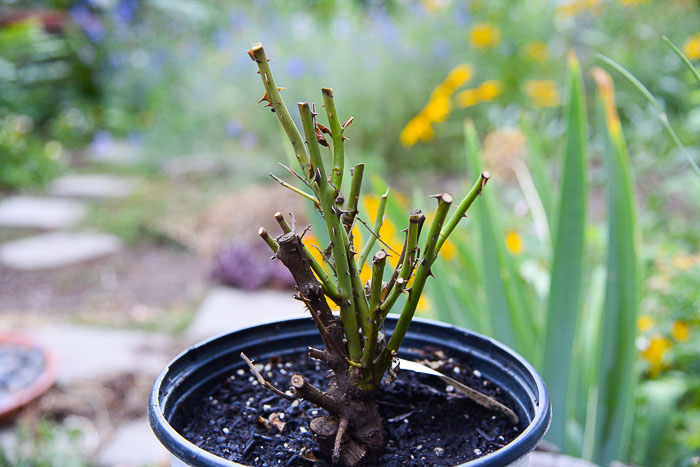
Where to place your potted rose for recovery.
Put the rose in a spot that gets mostly shade. I start the first two weeks or so in the total shade then I move the potted rose under a tree where it gets light-dappled sun.
Keep the soil around the pot moist so there is plenty of humidity. You could cover this with something to create a greenhouse effect if you prefer but I don’t find it any more effective.
Keeping the soil around the potted rose and the soil in the pot moist does the trick. Keep a close eye on the rose canes for some new growth.
Once you see new growth it usually means has started growing new roots. Keep the rose in the pot until you have lots of new growth or even roses blooming.
Here is the Candyland rose I dug up and potted in May. In a couple of months it not only leafed out but it was blooming too.
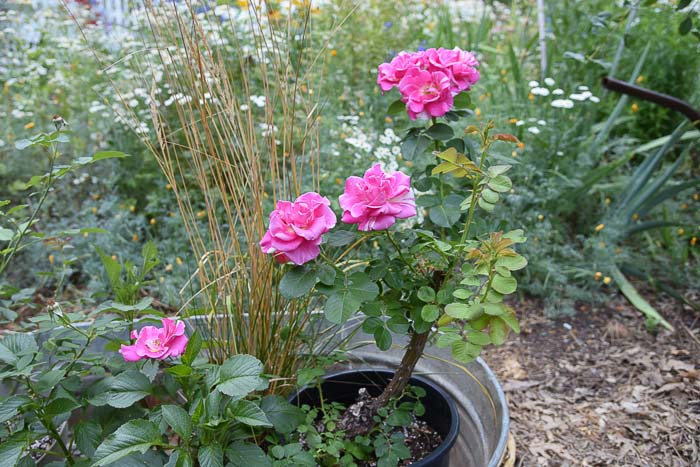
The Olivia Rose Austin rose has new shoots on it and I am hoping that means it is growing new roots.
I have a couple more months of nice weather and I will know by the first frost if it has been salvaged.
Another Olivia Rose Austin in my garden was found shriveling up and am doing the same with it. Seems the voles and gophers enjoy eating the Olivias for some reason.
I am going to give the repellent a real long-term test. This Fall I am going to replant some lilies (winter food for voles and they decimated all of mine last winter) and see if the repellent keeps the critters away.) The results will be shared next summer.
UPDATE: The gopher and vole repellent does work but only if you keep it up every few weeks which can be arduous and expensive. So I have resorted to planting the plants that they like to chew on in pots placed into the ground. So far it is working.
And that my friends is how I save a dying rose. This is also how I move a rose at the height of summer.
Sometimes you have to move a rose at the worst times and this method makes sure you do it and keep your rose alive. You will lose blooms for several weeks but the move is successful even during the hottest months.
If critters eating your rose is not the problem and you have eliminated pest infestation or disease then you can take it to a local extension and usually, they can help identify the problem. Or even a very good local nursery can help.
Did you enjoy this? Please PIN and share.
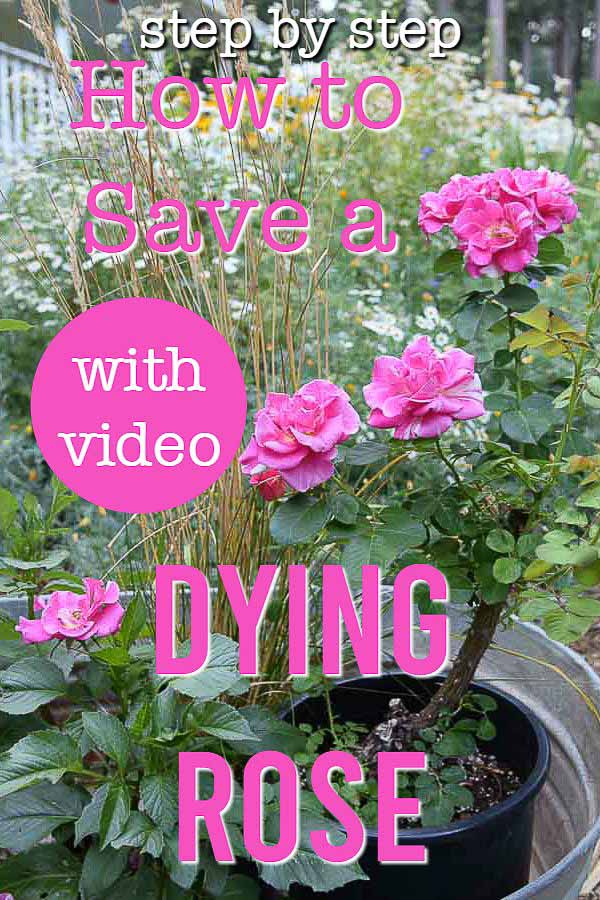
For more garden tips and tricks, fun DIYs, and great recipes just join us by filling out the bar at the top of this page.
Happy Gardening!


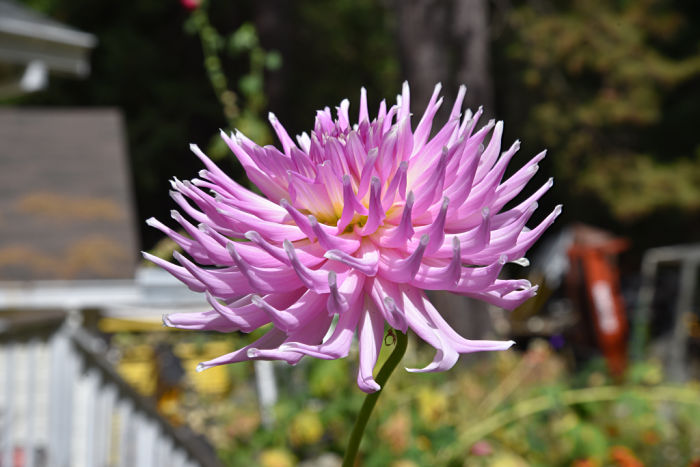

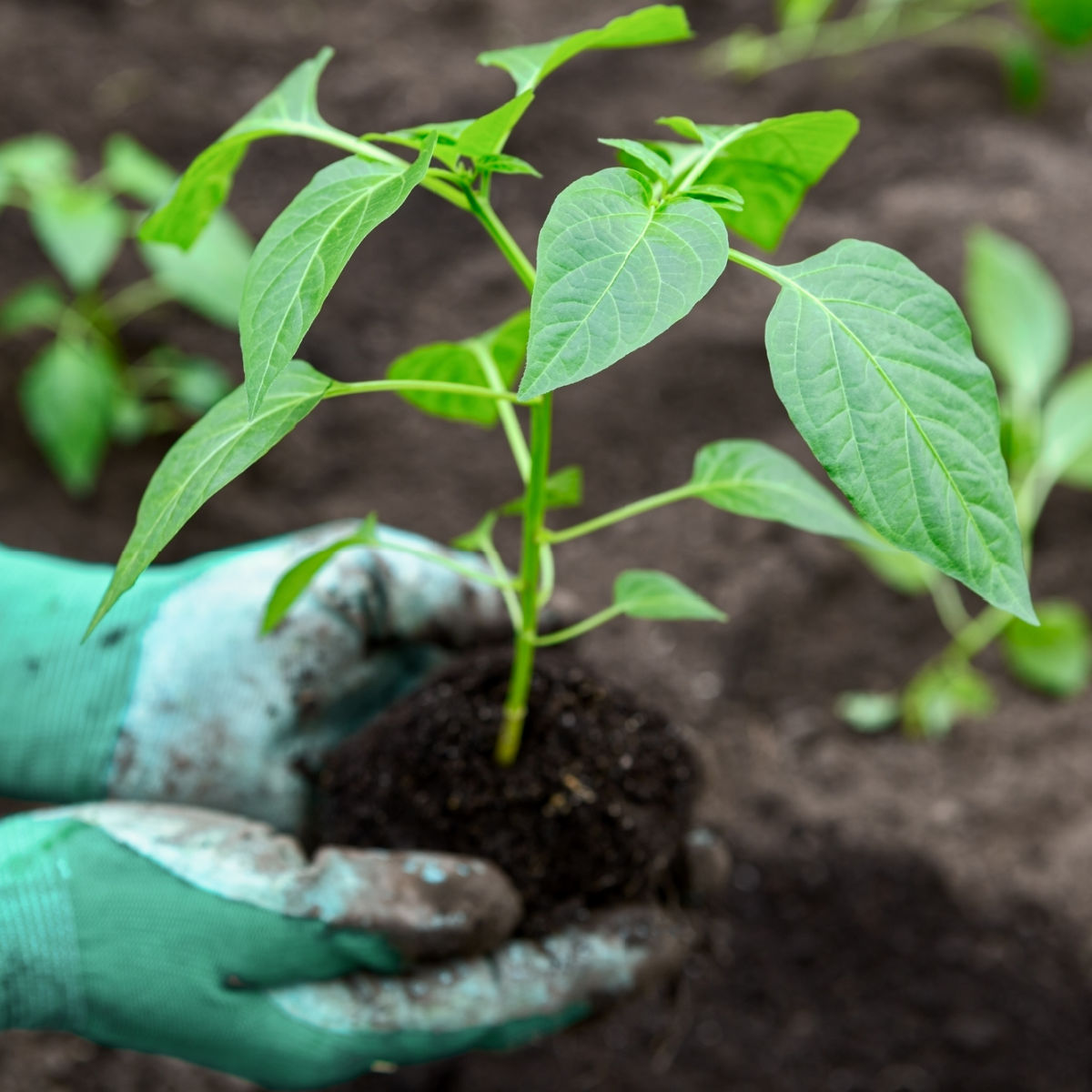

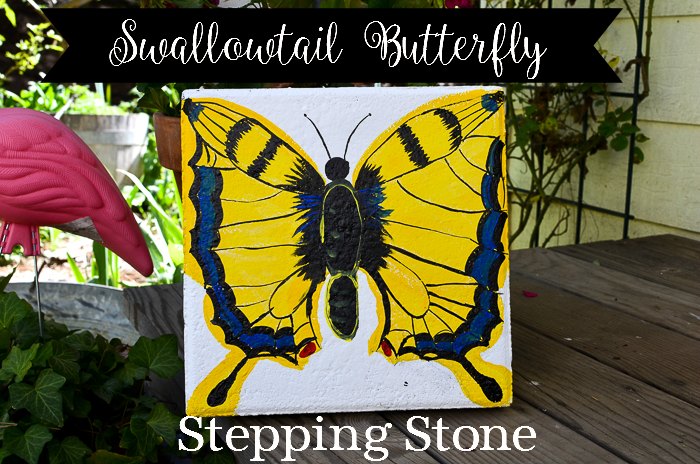
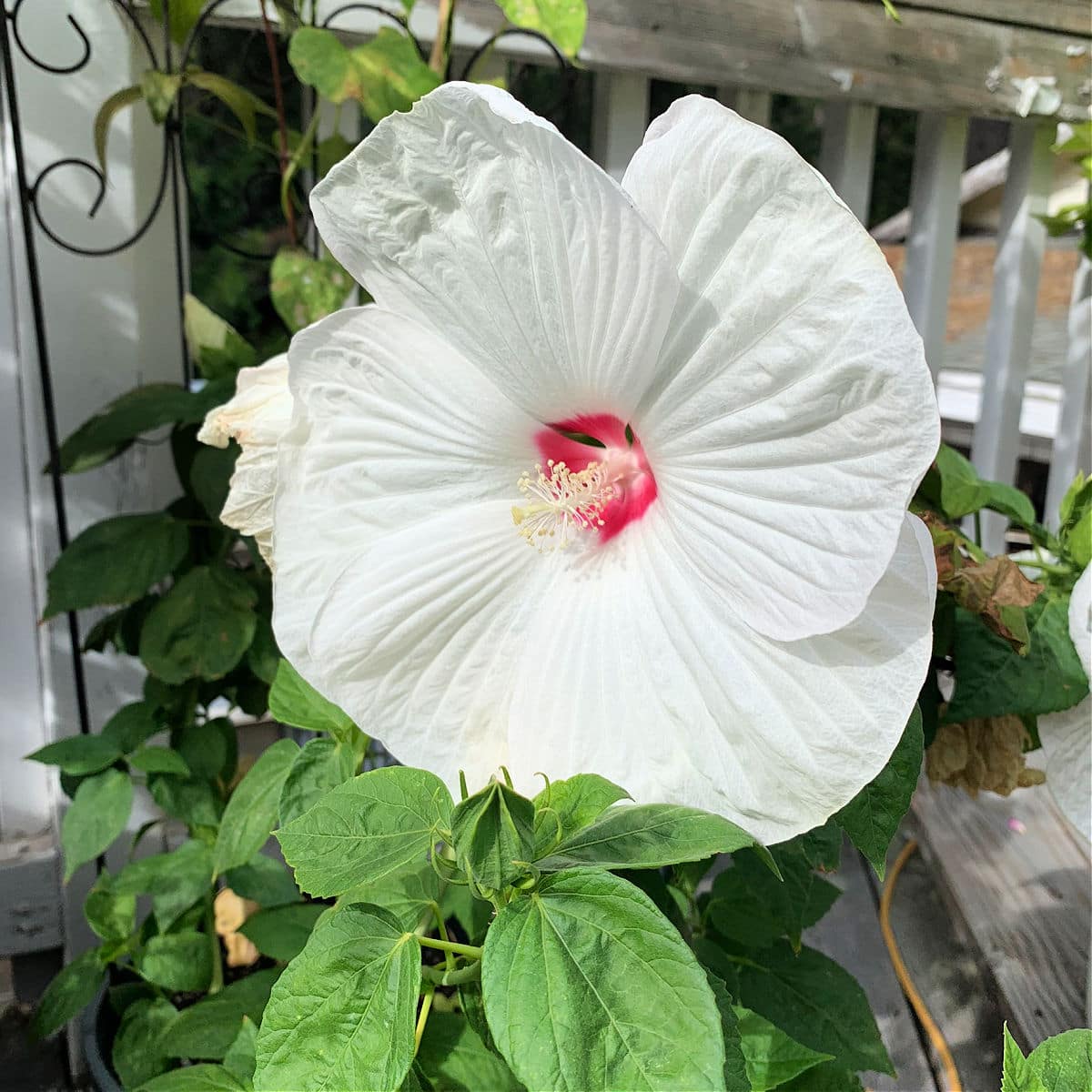
Hi Pamela realy enjoyed your article reviving an old rose
I recently acquired a discarded standed rose with a aging pot and suffering badly with black spot, crazy pruning and weeds just so neglected so I’ve taken it on as a project to see it through to better days Mum loved roses I live in Perth, Western Australia so can get quite hot through summer. Thanks again, cheers for now Eileen
Yes, you can pot them up in that size pot, in fact, I do have some roses in pots of that size. You may have to do a bit of root trimming but that does not hurt the rose. If she means the width of the rose canes at the base then you can easily prune those out.
Hi I have some questions about taking roses out of the ground and potting them, mainly about the size of the pot? I found tall pots with about 14-16”openings across, and 28” deep. My mom says the opening isn’t big enough for her bushes. I was reading that rose roots can be very deep so deep pots are a good idea, not necessarily the opening. Can you help?
Thank you for your advice on the save the dying roses
Hopefully, it is an “own root” rose. If it was a grafted rose what you see coming up from the base may be a Dr. Huey, which is the rootstock many roses are graft on.
I live in northern Alberta Canada. We had little snow this winter to insulate the roses from harsh freezing weather. I thought my climbing rose was dead. I see some new growth coming up. This article gives me hope that my rose will survive. I am watering carefully to give it the best chance possible. If it doesn’t respond well in the next couple of weeks I’ll take your advice on how to revive it.
Thank you! Your article and video will help me save my favorite rose of $50 that has it’s own root.
This was done in summer and was all done outdoors. Because it was during the hottest and driest time of year for me I kept this is afternoon shade, a touch of morning sun did not hurt it but I live in a relatively cool climate so I would suggest total shade. This rose had all of its roots eaten so extra care was needed.
Hello mam, A few questions and I really appreciate your time.
1. When I’m re-hydrating the roses,do I place them outdoors or indoors?
2. When you said total shade, do u mind providing a few examples of “total shade” locations?
Just go ahead and trim off the crispy and yellowed leaves, and the canes that look like they have died back, to a green portion. They should bounce back. Roses are tougher than you think. Just be careful of overwatering as that is just as bad as anything else.
I wish you success in recovering your roses.
Hello! I have six rose bushes in their 5 gallon nursery pots that were roasted by the sun while I was away for a few weeks. They were were watered while I was away but we are having a hot spell that was too much for them. All still have signs of life, but most of the foliage is yellow and some of it is crispy. What is my best bet on reviving any of my rose bushes? They have been moved to a shadier spot and I have liberally watered and fertilized them today.
Thank you for your time!
Just let it be, if it has limited roots then you can damage it with fertilizer unless you dig in a bit of worm castings only. It will take time to recover and two weeks is not near enough. If it is still alive then there is hope.
My dog just destroyed two of my roses, he dug it up and chew them up leaving them without branches and barely one root. I put them in a big pot in the shadow it’s been two weeks, I can see is not dead but nothing new yet. My question is if I can add fertilizer to make it stronger, or it will kill it?
Thanks
Hi Mabel, I have found the miniature roses hate being indoors. I don’t know what your weather is right now but if it is as mild as mine I would put them outdoors where they would get at least the morning sun if not sun all day. If you can’t put them outside I would make sure they got the best light you can find in your house. Also double check for spider mites, they are notorious for infecting these small roses. I love these miniature roses and can’t resist them but I must enjoy them in the house for a month or so then put them out in my greenhouse. There is just not enough light in my house for them. I hope this helps.
I purchased a few Rose’s that were on sale after valentine’s day. These miniature Rose’s were completely saturated and dying. Now I put it in a 5 gal pot, deadheaded them. All the leaves are dry and crunchy. I gave it a little liquid fish fertilizer. I want to know what’s the next step to reviving the Rose’s?
I have a rose, not sure which one it is, it is a very fragrant yellow one and has been growing quite well. This year it’s struggling. I am wondering can I dig it up like you did in your video? It is 5-ish years old and pretty big.
And if so, should I cut it back like you did??
We live in Flagstaff, AZ. When we moved here last year we had to change the way we planted trees. After we dug the holes, chicken wire was molded into the hole and up onto the top soil. Also, because of deer, wire cages were placed around the trees. Planting scrubs requires the same chicken wire in the holes, since shrubs are in our fenced backyard, only chicken was needed around the scrubs because bunnies love those!
I’m wondering if you could create an underground fence, using something like chicken wire, in which to plant your roses. Of course it might need to extend a few feet above ground. I don’t know if voles travel above ground at all. I have read that you can place chicken wire over bulbs to prevent squirrels from digging them up, and it keeps cats from using my flower beds as a litter box, thus my thinking about preventing underground critters from destroying your garden. Just a thought.🥴
A very interesting Andy informative article. I would definitely try this method with other plants as well.
Gosto muito de rosas, mas não as a tenho em minha casa a não ser duas pequenas mudas de mini-rosas, que estão em um vaso. Gostei muito do seu post, e me incentivou a tentar novamente com as rosas. Elas são maravilhosas. Obrigada pela sua didática na explicação. Facilita muito pra quem é leigo como eu.
Abraços calorosos do Brasil.